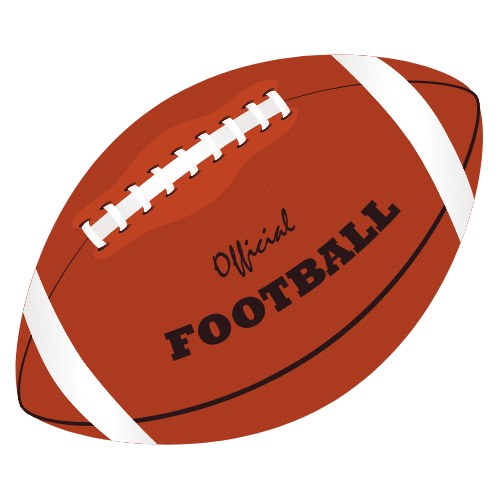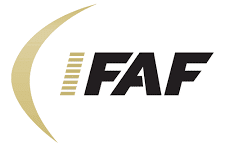Rule 7 - Snapping and Passing the Ball
SECTION 1. The Scrimmage
Article 1 - Starting with a Snap
a. The ball shall be put in play by a legal snap unless the rules provide for a legal free kick. [S7 and S19: ISP]
b. No player shall put the ball in play before it is ready for play (Rule 4-1-4). [S7 and S19: ISP] (A.R. 4-1-4:I and II)
PENALTY − [a-b] Dead-ball foul. Five yards from the succeeding spot [S7 and S19: IPR/ISP].
c. The ball may not be snapped in a side zone (Rule 2-31-6). If the starting point for any scrimmage down is in a side zone, the ball shall be transferred to the nearest hash mark.
Article 2 - Shift and False Start
a. Shift. After a huddle (Rule 2-14) or shift (Rule 2-22-1) and before the snap, all Team A players must come to an absolute stop and remain stationary in their positions without movement of the feet, body, head or arms for at least one full second before the ball is snapped. (A.R. 7-1-2:I)
b. False Start. Each of the following is a false start by Team A if it occurs prior to the snap after the ball is ready for play and all players are in scrimmage formation:
1. Any movement by one or more players that simulates action at the snap. This includes abruptly shifting a player or players that simulates the start of a play.
2. The snapper moving to another position.
3. A restricted lineman (Rule 2-27-4) moving his hand(s) or making any quick movement.
Exceptions:
(a) It is not a false start if a Team A lineman immediately reacts when threatened by a Team B player in the neutral zone (Rule 7-1-5-a-2) (A.R. 7-1-3:V)
(b) It is not a false start if the snapper takes his hand(s) off the ball, provided this does not simulate the start of a play (Rule 7-1-3-a-3).
4. An offensive player making any quick, jerky movement before the snap, including but not limited to:
(a) A lineman moving his foot, shoulder, arm, body or head in a quick, jerky motion in any direction.
(b) The snapper shifting or moving the ball, moving his thumb or fingers, flexing his elbows, jerking his head, or dipping his shoulders or buttocks.
(c) The quarterback making any quick, jerky movement that simulates the beginning of a play.
(d) A back simulating receiving the ball by making any quick, jerky movement that simulates the beginning of a play. (A.R. 7-1-3:VI).
5. The offensive team never coming to a one-second stop prior to the snap after the ball is ready for play. (A.R. 7-1-2:IV) This is an illegal shift that converts to a false start.
Article 3 - Offensive Team Requirements — Prior to the Snap
Each of the following (a-d) is a dead-ball foul. Officials should blow the whistle and not allow the play to continue. After the ball is ready for play and before it is snapped:
a. Snapper. The snapper (Rule 2-27-8):
1. May not move to a different position nor have any part of his body beyond the neutral zone.
2. May not lift the ball, move it beyond the neutral zone or simulate the start of a play.
3. May take his hand(s) off the ball, but only if this does not simulate the start of a play.
b. Nine-Yard Marks.
1. Each Team A substitute must have been between the nine-yard marks. Team A players who participated in the previous down must have been between the nine-yard marks after the previous down and before the next snap. (A.R. 3-3-4:I)
2. All Team A players must have been between the nine-yard marks after a charged team timeout, an injury timeout, a media timeout or the end of a period.
c. Encroachment. Once the snapper is established, no other Team A player may be in or beyond the neutral zone [Exceptions: (1) Substitutes and departing players; and (2) offensive players in a scrimmage kick formation who break the neutral zone with their hand(s) to point at opponents].
d. False Start. No Team A player may commit a false start (Rule 7-1-2-b) or contact an opponent. (A.R. 7-1-3:III)
PENALTY − [a-d] Dead-ball foul: Five yards from the succeeding spot. [S7 and S19: FST/ENC].
Article 4 - Offensive Team Requirements — At the Snap
Violation of each of the following (a-c) is a live-ball foul; the play is allowed to continue.
a. Formation. At the snap, Team A must be in a formation that meets these requirements:
1. All players must be inbounds
2. All players must be either linemen or backs (Rule 2-27-4).
3. At least five linemen must wear jerseys numbered 50 through 79 (Exception: When the snap is from a scrimmage kick formation, paragraph 5 below.)
4. No more than four players may be backs. (A.R. 7-1-4:III)
5. In a scrimmage kick formation at the snap (Rule 2-16-10) Team A may have fewer than five linemen numbered 50-79, subject to the following conditions: : (A.R.7-1-4:VII).
(a) Any and all linemen not numbered 50-79 who are ineligible receiver(s) by position become exceptions to the numbering rule when the snapper is established.
(b) Any and all such numbering-exception players must be on the line and may not be on the end of the line. Otherwise, Team A commits a foul for an illegal formation.
(c) Any and all such players are exceptions to the numbering rule throughout the down and remain ineligible receivers unless they become eligible under Rule 7-3-5 (forward pass touched by an official or a Team B player).
The conditions in 5(a)-5(c) are no longer in effect if prior to the snap a period ends or there is a timeout charged to the referee or one of the teams.
b. Man in motion.
1. One back may be in motion, but he may not be moving toward his opponent’s goal line. (A.R. 7-1-4:I-II, X)
2. The player who goes in motion may not start from the line of scrimmage unless he first becomes a back and comes to a complete stop.
3. A player in motion at the snap must have satisfied the one-second rule — i.e., he may not start his motion before any shift has ended (Rule 2-22-1-c).
c. Illegal shift. At the snap, Team A may not execute an illegal shift (Rule 7-1-2-a). (A.R. 7-1-3:I-II)
PENALTY − [a-c] Live-ball foul: Five yards from the previous spot [S19 or S20: ILF/ILM/ISH]. For live-ball fouls occurring when or after the snap starts during scrimmage kick plays other than field goal plays: Five yards from the previous spot or if the kick crosses the neutral zone, five yards from the spot where the subsequent dead ball belongs to Team B.
Article 5 - Defensive Team Requirements
The defensive team requirements are as follows:
a. Each of the following (1-5) is a dead-ball foul. Officials should blow the whistle and not allow the play to continue. After the ball is ready for play and before the ball is snapped:
1. No player may touch the ball except when moved illegally as in Rule 7-1-3-a-1, nor may any player contact an opponent or in any other way interfere with him. (A.R. 7-1-5:I-II)
2. No player may enter the neutral zone threatening an offensive lineman and causing him to react immediately, or commit any other dead-ball offside foul (Rules 2-18-2 and 7-1-2-b-3 Exceptions). (A.R. 7-1-3:V) (A.R. 7-1-5:III)
3. No player may cross the neutral zone and without making contact continue his charge toward any back.
PENALTY − [1-3] Dead ball foul, offside. Five yards from the succeeding spot [S18: DOF].
4. Player(s) aligned in a stationary position within one yard of the line of scrimmage may not make quick, abrupt or exaggerated actions that are not part of normal defensive player movement. (A.R. 7-1-5:IV)
5. No player shall use words or signals that disconcert opponents when they are preparing to put the ball in play. No player may call defensive signals that simulate the sound or cadence of, or otherwise interfere with, offensive starting signals.
PENALTY − [4-5] Dead ball foul, delay of game. Five yards from the succeeding spot [S21: DOD].
b. When the snap starts:
1. No player may be in or beyond the neutral zone at the snap.
2. All players must be inbounds.
PENALTY − Live-ball foul. Five yards from the previous spot [S18: DOF].
Article 6 - Handing the Ball Forward
No player may hand the ball forward except during a scrimmage down as follows:
a. A Team A back may hand the ball forward to another back only if both are behind their scrimmage line.
b. A Team A back behind his scrimmage line may hand the ball forward to a teammate who is on his scrimmage line at the snap, provided that teammate leaves his line position by a movement of both feet that faces him toward his own end line and is at least two yards behind his scrimmage line when he receives the ball. (A.R. 7-1-6:I)
PENALTY − Five yards from the spot of the foul; also loss of a down if by Team A before team possession changes during a scrimmage down [S35 and S9: IFH].
Article 7 - Planned Loose Ball
A Team A player may not advance a planned loose ball in the vicinity of the snapper.
PENALTY − Five yards from the previous spot and loss of down [S19 and S9: IPR].



